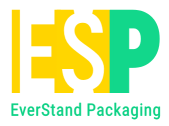In the fast-paced world we live in, packaging is more than just a "coat" for products. It's a crucial aspect of branding, protection, and functionality. The right packaging can make a significant difference in how a product is perceived and how well it performs on the market. This article will guide you through the different types of packaging bags and the materials used, helping you make informed decisions for your products.
Common Bag Types
When it comes to packaging, there's a wide variety of bag types to choose from. Each type has its unique features and is suitable for different products and purposes.
1. Three-Side Sealed Bag
This is one of the simplest and most cost-effective bag types. It’s sealed on three sides, leaving one side open for filling. It’s commonly used for single-use items and flat products.

2. Stand-Up Pouch
Stand-up pouches are popular for their ability to stand upright on shelves, offering better visibility and branding opportunities. They are ideal for snacks, pet food, and other consumer goods.

3. Three-Side Sealed Zipper Bag
Combining the simplicity of three-side sealed bags with the convenience of a zipper, these bags are great for products that need to be resealed after opening, such as coffee or snacks.

4. Stand-Up Zipper Bag
These bags offer the best of both worlds: the stand-up feature for shelf display and a zipper for resealability. They are commonly used for food items, powders, and liquids.

5. Eight-Side Sealed Bag
With eight sides sealed, these bags offer a robust structure and ample space for branding. They are perfect for larger or heavier products like rice, pet food, and bulk items.

6. Side-Sealed Bag
Side-sealed bags are sealed on the sides, providing a neat and uniform appearance. They are often used for bakery products and other food items.
7. Back-Sealed Bag
Back-sealed bags have a seam running down the back, making them ideal for high-speed production and automated filling lines. They are used for candies, snacks, and other small items.

8. Yin-Yang Bag
These bags have a unique dual-chamber design, allowing for separate compartments within the same bag. They are used for products that need to be kept apart until use, such as dual-phase skincare products.

9. Spout Bag
Spout bags are equipped with a spout for easy pouring and resealing. They are perfect for liquids and semi-liquids like juices, sauces, and detergents.

10. Shaped Bag
Shaped bags can be customized into various shapes to match the product or brand identity. They add a unique appeal and are often used for promotional items or special editions.

Thickness of Packaging Bags
The thickness of packaging bags is measured in "C," where 1C equals 0.01mm. The right thickness depends on the product and its requirements. For instance, packaging for rice dumplings and mooncakes typically ranges from 12C to 20C. Thicker bags offer better protection but may cost more.
Materials Used in Packaging Bags
Selecting the right material for your packaging is crucial. Here are some common materials used in the industry:
Polypropylene (PP)
PP offers excellent clarity and resistance to moisture. It is widely used for food packaging and other consumer goods.
Polyvinyl Chloride (PVC)
PVC is tough and resistant to chemicals, making it suitable for packaging chemicals and industrial products.
Polyamide (PA, commonly known as Nylon)
Nylon is known for its strength and barrier properties. It is often used for vacuum packaging and products that need a strong seal.
Polycarbonate (PC)
PC is highly durable and heat-resistant. It is used for packaging that requires high-temperature resistance.
Polyester (PET)
PET is valued for its strength, clarity, and barrier properties. It is commonly used for food and beverage packaging.
Oriented Polypropylene (OPP)
OPP is known for its clarity and stiffness. It is used for products that need a crisp, professional appearance.
Cast Polypropylene (CPP)
CPP offers excellent heat-seal strength and clarity. It is used for packaging that requires a high-quality seal.
Aluminum-Plated Bags

Composition and Properties
Pure aluminum bags are made by laminating a layer of pure aluminum with various plastic films. They are soft, highly reflective, and provide excellent barrier properties against moisture, oxygen, and light.
Applications and Benefits
Pure aluminum bags are perfect for vacuum packaging and products that need extended shelf life, such as cooked foods, meats, and pharmaceuticals. They maintain product freshness and provide superior protection.
Choosing the Right Packaging for Your Product
Selecting the right packaging involves considering several factors:
- Product Nature: Consider whether the product is dry, wet, fragile, or requires high protection.
- Shelf Life: Products with longer shelf life needs better barrier properties.
- Branding: Choose a packaging style that aligns with your brand image.
- Cost: Balance between the cost of materials and the required protection level.
By matching the bag type and material to your product's needs, you can ensure optimal protection, usability, and appeal.
Conclusion
Choosing the right packaging is essential for protecting your product, enhancing its shelf life, and making a strong impression on consumers. By understanding the different types of bags and materials available, you can make informed decisions that best suit your product's needs and your brand's image.

